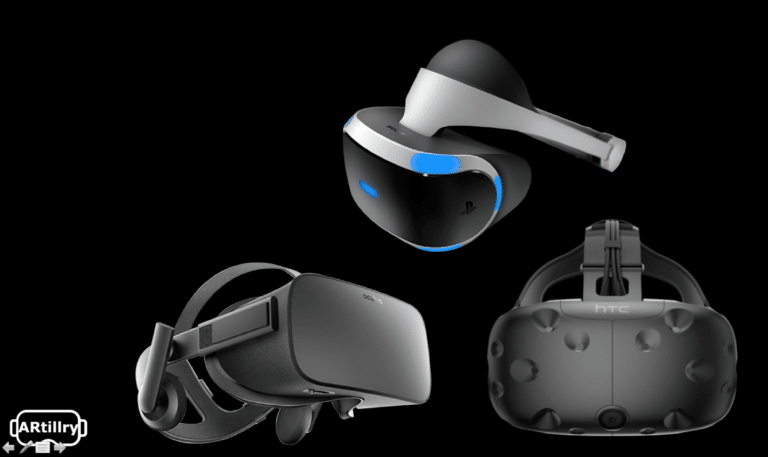
PSVR and HTC Vive score highest on satisfaction among VR headsets. This was shown in the latest ARtillry Intelligence Briefing: VR Usage & Consumer Attitudes (excerpt below), including implications, lessons and takeaways.
Working closely with Thrive Analytics, ARtillry authored questions to be fielded through its established survey engine. This first wave of Virtual Reality Monitor™ (VRM) taps a sample of 2000 adults to reveal consumer behavior patterns that are examined throughout the report.
ARtillry Intelligence Briefing: VR Usage & Consumer Attitudes, Part Ib: VR Headset Satisfaction

Drilling down from ownership, how are consumers satisfied with their headsets? Satisfaction levels from VRM align with some of the conclusions made above, but with a few surprises. Overall, the takeaway is that satisfaction levels are favorable across the board, indicating a strong future for VR.
These satisfaction levels also align with another key principle ARtillry has observed. After receiving a VR demo — say a gaming or productivity app — new users will grasp it right away, then enthusiastically ideate other prospective VR applications that could apply to their lives or work.
“I’ve been working in tech for many years, and have never seen a new technology that people understand so quickly when you give them a demo,” Strata CEO John Wright told ARtillry recently. “And their minds will immediately go to other VR applications that make sense.”
One reason for this cognitive leap is VR’s visual intensity. It strikes users to such an immersive degree that they understand it on deeply visceral levels. But because it’s so visceral, it can’t be explained in words. So people have to try it in person to get excited about it and really “get it.”
This is all to say that it’s no surprise that the satisfaction levels are so high for VR owners. And that stands in stark contrast to the low interest levels of those who have not yet tried VR (explored in later sections). This underscores that one of the VR industry’s biggest challenges is getting people to try it.
Drilling down to per-device satisfaction levels, PSVR was once again the winner, but this time with a lesser margin of victory. PSVR’s highest rating on this measurement comes at somewhat of a surprise, given the above premise that its tier-1 counterparts offer a superior VR experience.
Its satisfaction level could result from a few factors: One, consumers’ perception of value (lower cost) could boost an overall sense of satisfaction. But more likely, high satisfaction comes from ease of use (plug & play with PS4) and social features, such as friends’ participation in VR games (see appendix).
Nonetheless, HTC Vive only scored one percentage point lower, making it essentially a tie. As explored further in the appendix, HTC Vive has received accolades from consumers and developers for its more open platform and content availability, compared to other tier-1 headsets.
Oculus Rift’s significantly lower satisfaction score conversely stems from a combination of a closed system with less available content, and some organizational missteps. The latter refers to initial pricing miscalculations and some shipping delays for its highly rated touch controllers last year.
Moving on to Tier 2, satisfaction levels are at parity between the two contenders. GearVR has the edge in smartphone compatibility and available content. But Daydream view could pull ahead due to its open platform approach (analogous to Android OS) that works with more devices in the long run.
Lastly, there’s the humble cardboard. Though it scored lowest in satisfaction (not surprising), it’s still a high score. For the latter point, we attribute the pricing/value psychology examined above in light of PSVR. But moreover, it goes back to the overall satisfaction levels for VR as a novel experience.
Up Next: VR Desired Areas of Improvement.
For a deeper dive on AR & VR insights, see ARtillry’s new intelligence subscription, and sign up for the free ARtillry Weekly newsletter.
Disclosure: ARtillry has no financial stake in the companies mentioned in this post, nor received payment for its production. Disclosure and ethics policy can be seen here.
